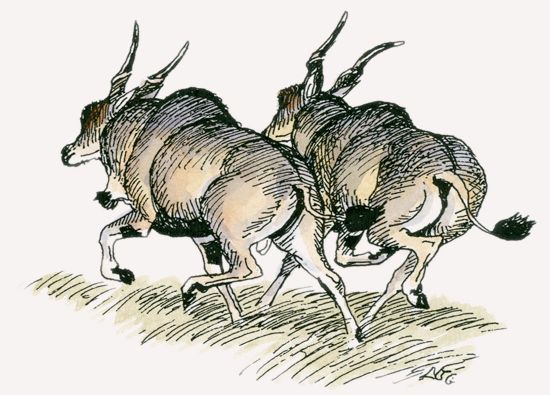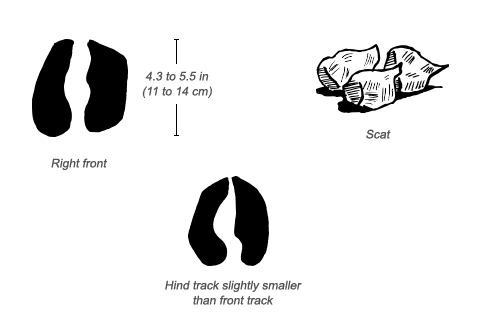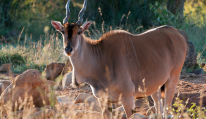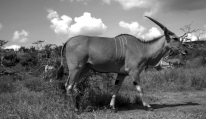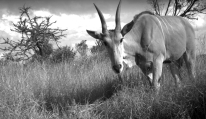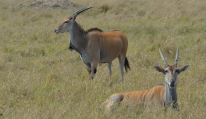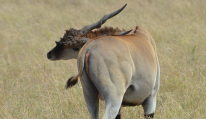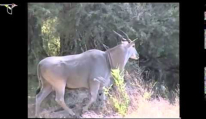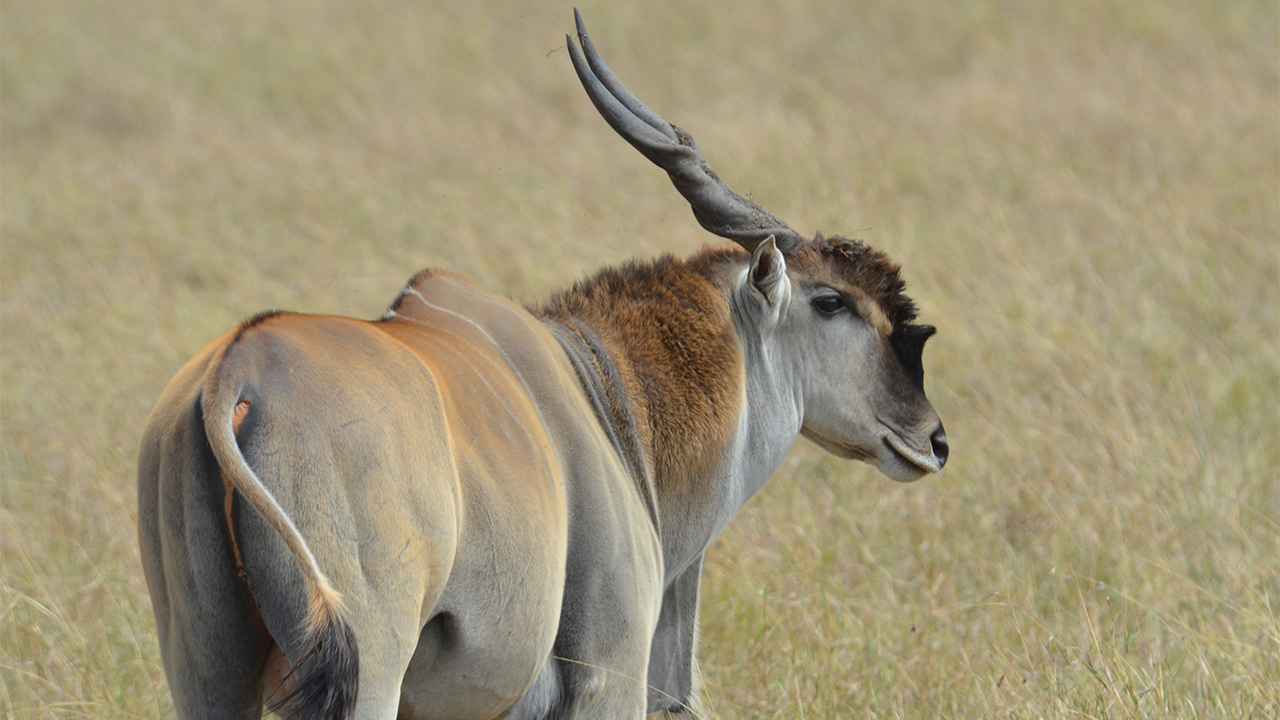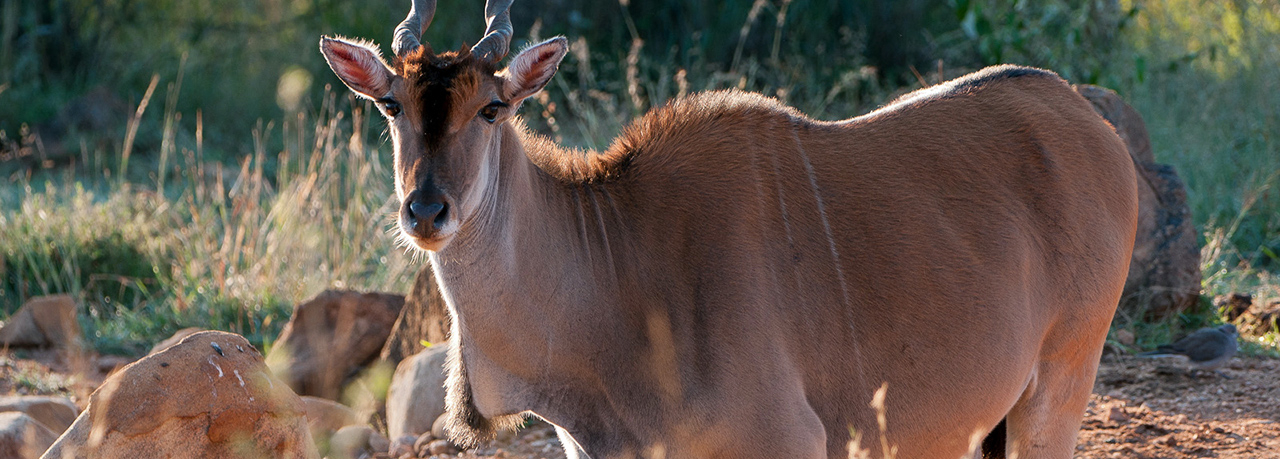Social Structure
The size of a common eland herd varies from very small to more than 500 individuals, with groups constantly changing as elands wander in and out. Elands do not cultivate lasting relationships, and affiliations last only a few days. Still, elands are rarely alone. There are groups of adult males, females, and a mixture of both. The largest groups have adults and calves. As calves mature, they form new groups composed of members of the same sex. Males generally stay within these small, all-adult male herds, but females return to the larger groups to give birth. Within the large female and calf groups, calves bond more with one another than with their mothers. Even when the group spreads out to graze, young elands gather in a tight unit at the center.
Communication
Elands do not usually communicate vocally, though they do emit an alarm call similar to that of the bushbuck. Female elands also converse with their young through a series of clicks, grunts, and moos, to which calves reply with moans or whimpers. Males occasionally bleat during courtship or bellow during dominance displays. They also exhibit a threat display that includes a menacing stare and lunging with their horns.
Behavior
Type of food and environment play important roles in the common eland’s behavior. In hotter areas, elands spend all day resting in the shade and do not forage until night. In cooler climates, they alternate during the day between resting and foraging. They are not territorial, and herds are continuously on the move. Young male elands spar by tangling their horns and pushing each other until one is victorious. Real fights, however, are rare and generally only occur between older males challenging each other for a female. During these matches, males don’t tangle their horns. Instead, they smash viciously into one another, often causing serious injuries. Male elands sometimes rub their faces in mud and cover their horns with vegetation and broken branches, which effectively alters their appearance and increases their odor. The reason for this behavior is unclear.
Conservation
The common eland is often hunted for its meat. Population has declined, and habitat destruction threatens to further reduce its numbers, as grazing land disappears. With less available territory, elands become more susceptible to drought. However, new efforts have been made to introduce elands into game and private ranches in southern Africa.

